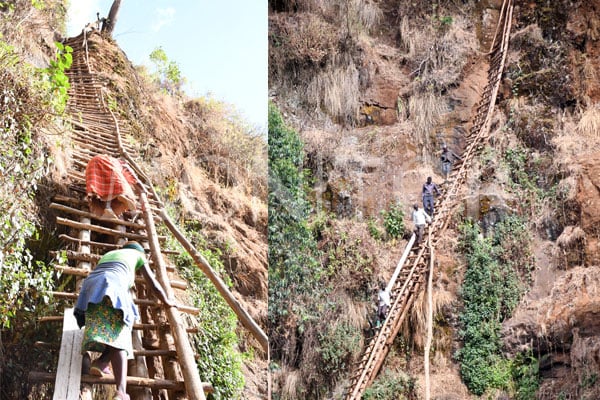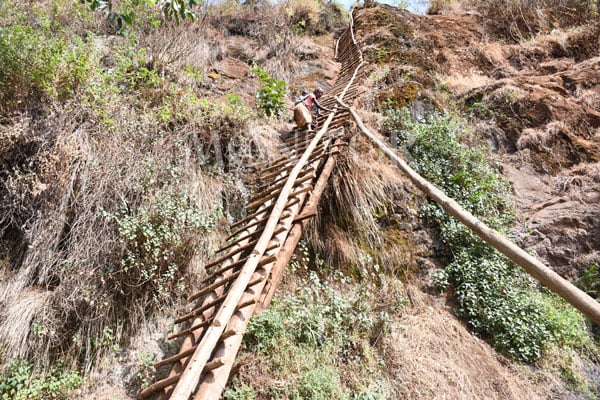Prime
How Mt Elgon ridge wooden ladder was built in Bulambuli

Residents descend the wooden ladder in Manyololo Village, Bulunganya Sub-county, Bulambuli District.
What you need to know:
- Mr Eric Wanyoro, an elder, says in the early 1900s, the ladder collapsed after one year of its reconstruction and one person died.
The whacking wooden ladder, which is about 300 metres, is placed on Mt Elgon ridge.
The ladder has since time immemorial linked the locals from the mountainous area to the lower parts of Bulambuli District.
According to Mr Isaac Wogisha, the ladder, which is used by close to 1,000 people daily, is the responsibility of the community in terms of its maintenance and construction.
“When we are building the ladder, every family gets involved in sourcing for materials and the women cook for us food,” he says.
The ladders’ life span is between four and five years, depending on the quality and durability of the timber and weather conditions.
According to the locals, the wooden ladder is usually shifted from one point to another, especially from an area, which has developed cracks.
“We start with the strongest poles as support from the bottom as we ascend,” Mr Wogisha explains.
He adds: “They ensure they are strong enough because we are farmers and this is the only transportation route.”
Mr Eric Wanyoro, an elder, says in the early 1900s, the ladder collapsed after one year of its reconstruction and one person died.
“Since then, we have started monitoring the ladder so that such an incident cannot reoccur. We also started to use strong poles unlike before,” Mr Wanyoro says.
The poles and the nails used in the reconstruction of the ladder are often contributed by the locals.
Mr David Makoba, 73, says for a long time, they have asked the district leaders to construct for them a suspended or metallic bridge in vain.
“We keep shifting them across the ridge whenever they become old or develop cracks,” he says.
Mr David Masaba, another resident, says construction of a better bridge will boost trade and improve household income.
The locals living in the densely populated villages are mostly farmers, who grow onions and coffee for their livelihood.





